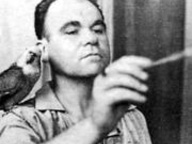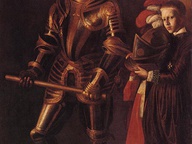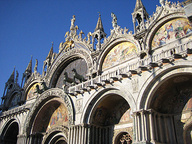Haris Epaminonda. Chapter IV
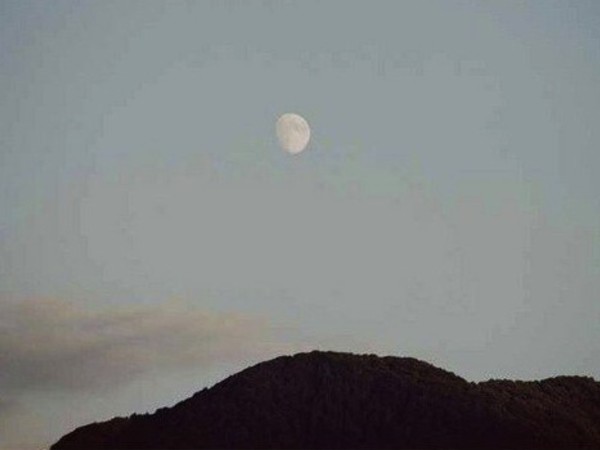
Haris Epaminonda. Chapter IV, Fondazione Querini Stampalia, Venezia
From 14 Marzo 2014 to 18 Maggio 2014
Venice
Place: Foundation Querini Stampalia
Address: Castello 5252
Times: from Tuesday to Sunday 10 am - 6 pm
Responsibles: Chiara Bertola, Andrea Viliani
Ticket price: full € 10, reduced € 8
Telefono per informazioni: +39 041 2711411
E-Mail info: artecontemporanea@querinistampalia.org
Official site: http://www.querinistampalia.org
The Foundation Querini Stampalia proposed Chapter IV, the first solo show in an Italian institution Cypriot artist Haris Epaminondas (1980, lives and works in Berlin).
Haris Epaminondas has established itself in recent years as one of the central figures in the art scene of his generation internationally. Just in Venice, in 2007, he co- Epaminondas represented Cyprus (along with Mustafa Hulusi ) to the Biennale.
In the presence at the Biennale was followed by participation in the Berlin Biennale in 2008 and the invitation to dOCUMENTA (13) in 2012. Solo exhibitions have been devoted to the Malmö Konsthall (2009) , Tate Modern in London (2010), MoMA -Museum of Modern Art, New York (2011) and the Schirn Kunsthalle, Frankfurt , Germany ( 2011).
The Venetian exhibition , curated by Chiara Bertola and Andrea Viliani ( as co - guest curator ) and staged in Carlo Scarpa , is the result of an international co-production between the Fondazione Querini Stampalia , Contemporary Art Centre Point Nicosia, Modern Art Oxford and the Kunsthaus in Zurich, where different versions of the show have been made in recent months.
Chapter IV has also been produced in collaboration with Galleria Massimo Minini of Brescia, thanks to support of Made in Italy luxury brand of shoes Ballin Fiesso d' Artico ( Venice ) and the support of the Ministry of Education and Culture of Cyprus.
The artist often uses pre-existing materials , such as photographs from books and found objects, sculptures and films that assembles with combined structures and supports that you have designed . His installations , the exhibition displays as well as interventions on architecture, giving rise to visual puzzles that refer to a multitude of meanings . His language often tends to abstraction and evokes mysterious atmospheres that defy precise classification .
Many will recall the work of Haris Epaminondas ( with Daniel Gustav Cramer ) in the building of Hauptbahnof Kassel last dOCUMENTA (13). That exhibition , scattered over three floors, appeared surprising how fragmentary , dislocated , rhythmic unit is reassembled into something only at the end of the trail ... It had the feeling of walking into a house / museum where things / works were mostly hidden . Everything was on the limits , at the edges, hidden in the corners, suspended ... until, in the proceeding , the space was defining and rearranging as in the syllables of a phrase that is revealed gradually .
The exhibition Haris Epaminondas at the Fondazione Querini Stampalia in Venice is the fourth leg of the European tour. The artist works within the space created by Carlo Scarpa and presents a new version of his latest film Chapters . In Venice , the complex articulation of citations of the East, the chromatic refinement and formal as the echo of the distant and the temporality and geography of the area of ??Scarpa, led the artist to deal with the great architect .
"In Venice, Haris Epaminondas play again with the display of the exhibition: use space itself as a score - explains Chiara Bertola - where the materials become signs that reunite as a three-dimensional painting . The artist responds and interacts with the architecture of the shoe with a geometric counterpoint , punctuation refined boosting, points out, three-dimensi , expands the complexity of the language of architecture".
The centerpiece of the exhibition is represented by Chapters , a four-hour film shot in the fall of 2012 in Cyprus on 16 mm film . Chapters is now the most elaborate film of the artist. At the Querini Stampalia Chapters - originally shown in its entirety on four screens , with the sound of ' Part Wild Horses Mane On Both Sides ' - will be deconstructed in a novel adaptation .
" The radical congruence between the intervention of Epaminondas and the exhibition space - says Andrea Viliani - should also be attributed to the location of the film Chapters , the island of Cyprus , whose historical relations with a city like Venice , have settled in the history of the the city, the gateway to Europe to that Orient , continuously and in fantasy is evoked in the narrative open , floating , dreaming of Chapters as in various elements of the architectural and decorative Scarpa . "
In Chapters Epaminondas nevertheless proposes some of the " styles " of his artistic language : the vessels, the flow of water , the monument , ruins, landscapes, trees , animals . A vocabulary of objects and images that allow you to investigate the notion of time and the permeability of memory. In an atmosphere full of mysticism , men, women , animals and objects move and interact , performing actions and ritual gestures loads of a multiplicity of possible meanings , often emphasized by the slow implementation or through the technique of stop motion .
The film develops through minimal gestures and choreographed with a fragmented narrative sequence . The principle of duality and the symbolism are the compass for orientation in this spiritual journey that continuously interact and respond pairs of concepts and elements: the full and empty , the sun and the moon , the water and the desert, the white and black, the inner and the outer man and woman, nature and culture. A journey into a physical and mental space , or in a suspended time , and melancholy at the same time abstract that let emotions flow and imaginary constructions , whose possible references ranging from Fra Angelico to Sergei Parajanov to Pier Paolo Pasolini, greek architecture Roman and Byzantine Carlo Scarpa.
The exhibition will be accompanied by an artist's book published during the exhibition from Humboldt (Milan ) and co- produced by the Kunsthaus in Zurich, the Fondazione Querini Stampalia Galleria Massimo Minini of Brescia and the Rodeo Gallery Instabul . Distribution The Presses du Réel and Idea Books.
A special thanks to Crovato Floors Ltd. Venice and Enea Righi and Lorenzo Paini.
Partner institutions:
Point Center for Contemporary Art, Nicosia; Modern Art, Oxford; Kunsthaus, Zurich
Haris Epaminondas has established itself in recent years as one of the central figures in the art scene of his generation internationally. Just in Venice, in 2007, he co- Epaminondas represented Cyprus (along with Mustafa Hulusi ) to the Biennale.
In the presence at the Biennale was followed by participation in the Berlin Biennale in 2008 and the invitation to dOCUMENTA (13) in 2012. Solo exhibitions have been devoted to the Malmö Konsthall (2009) , Tate Modern in London (2010), MoMA -Museum of Modern Art, New York (2011) and the Schirn Kunsthalle, Frankfurt , Germany ( 2011).
The Venetian exhibition , curated by Chiara Bertola and Andrea Viliani ( as co - guest curator ) and staged in Carlo Scarpa , is the result of an international co-production between the Fondazione Querini Stampalia , Contemporary Art Centre Point Nicosia, Modern Art Oxford and the Kunsthaus in Zurich, where different versions of the show have been made in recent months.
Chapter IV has also been produced in collaboration with Galleria Massimo Minini of Brescia, thanks to support of Made in Italy luxury brand of shoes Ballin Fiesso d' Artico ( Venice ) and the support of the Ministry of Education and Culture of Cyprus.
The artist often uses pre-existing materials , such as photographs from books and found objects, sculptures and films that assembles with combined structures and supports that you have designed . His installations , the exhibition displays as well as interventions on architecture, giving rise to visual puzzles that refer to a multitude of meanings . His language often tends to abstraction and evokes mysterious atmospheres that defy precise classification .
Many will recall the work of Haris Epaminondas ( with Daniel Gustav Cramer ) in the building of Hauptbahnof Kassel last dOCUMENTA (13). That exhibition , scattered over three floors, appeared surprising how fragmentary , dislocated , rhythmic unit is reassembled into something only at the end of the trail ... It had the feeling of walking into a house / museum where things / works were mostly hidden . Everything was on the limits , at the edges, hidden in the corners, suspended ... until, in the proceeding , the space was defining and rearranging as in the syllables of a phrase that is revealed gradually .
The exhibition Haris Epaminondas at the Fondazione Querini Stampalia in Venice is the fourth leg of the European tour. The artist works within the space created by Carlo Scarpa and presents a new version of his latest film Chapters . In Venice , the complex articulation of citations of the East, the chromatic refinement and formal as the echo of the distant and the temporality and geography of the area of ??Scarpa, led the artist to deal with the great architect .
"In Venice, Haris Epaminondas play again with the display of the exhibition: use space itself as a score - explains Chiara Bertola - where the materials become signs that reunite as a three-dimensional painting . The artist responds and interacts with the architecture of the shoe with a geometric counterpoint , punctuation refined boosting, points out, three-dimensi , expands the complexity of the language of architecture".
The centerpiece of the exhibition is represented by Chapters , a four-hour film shot in the fall of 2012 in Cyprus on 16 mm film . Chapters is now the most elaborate film of the artist. At the Querini Stampalia Chapters - originally shown in its entirety on four screens , with the sound of ' Part Wild Horses Mane On Both Sides ' - will be deconstructed in a novel adaptation .
" The radical congruence between the intervention of Epaminondas and the exhibition space - says Andrea Viliani - should also be attributed to the location of the film Chapters , the island of Cyprus , whose historical relations with a city like Venice , have settled in the history of the the city, the gateway to Europe to that Orient , continuously and in fantasy is evoked in the narrative open , floating , dreaming of Chapters as in various elements of the architectural and decorative Scarpa . "
In Chapters Epaminondas nevertheless proposes some of the " styles " of his artistic language : the vessels, the flow of water , the monument , ruins, landscapes, trees , animals . A vocabulary of objects and images that allow you to investigate the notion of time and the permeability of memory. In an atmosphere full of mysticism , men, women , animals and objects move and interact , performing actions and ritual gestures loads of a multiplicity of possible meanings , often emphasized by the slow implementation or through the technique of stop motion .
The film develops through minimal gestures and choreographed with a fragmented narrative sequence . The principle of duality and the symbolism are the compass for orientation in this spiritual journey that continuously interact and respond pairs of concepts and elements: the full and empty , the sun and the moon , the water and the desert, the white and black, the inner and the outer man and woman, nature and culture. A journey into a physical and mental space , or in a suspended time , and melancholy at the same time abstract that let emotions flow and imaginary constructions , whose possible references ranging from Fra Angelico to Sergei Parajanov to Pier Paolo Pasolini, greek architecture Roman and Byzantine Carlo Scarpa.
The exhibition will be accompanied by an artist's book published during the exhibition from Humboldt (Milan ) and co- produced by the Kunsthaus in Zurich, the Fondazione Querini Stampalia Galleria Massimo Minini of Brescia and the Rodeo Gallery Instabul . Distribution The Presses du Réel and Idea Books.
A special thanks to Crovato Floors Ltd. Venice and Enea Righi and Lorenzo Paini.
Partner institutions:
Point Center for Contemporary Art, Nicosia; Modern Art, Oxford; Kunsthaus, Zurich
SCARICA IL COMUNICATO IN PDF
COMMENTI

-
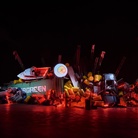 Dal 27 marzo 2025 al 27 luglio 2025
Milano | Pirelli HangarBicocca
Dal 27 marzo 2025 al 27 luglio 2025
Milano | Pirelli HangarBicocca
-
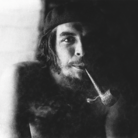 Dal 27 marzo 2025 al 30 giugno 2025
Bologna | Museo Civico Archeologico
Dal 27 marzo 2025 al 30 giugno 2025
Bologna | Museo Civico Archeologico
-
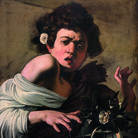 Dal 27 marzo 2025 al 20 luglio 2025
Firenze | Villa Bardini
Dal 27 marzo 2025 al 20 luglio 2025
Firenze | Villa Bardini
-
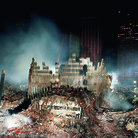 Dal 25 marzo 2025 al 24 agosto 2025
Brescia | Museo di Santa Giulia
Dal 25 marzo 2025 al 24 agosto 2025
Brescia | Museo di Santa Giulia
-
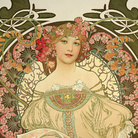 Dal 22 marzo 2025 al 20 luglio 2025
Ferrara | Palazzo dei Diamanti
Dal 22 marzo 2025 al 20 luglio 2025
Ferrara | Palazzo dei Diamanti
-
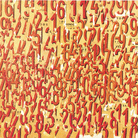 Dal 22 marzo 2025 al 08 giugno 2025
Venezia | Ca’ Pesaro – Galleria Internazionale d’Arte Moderna
Dal 22 marzo 2025 al 08 giugno 2025
Venezia | Ca’ Pesaro – Galleria Internazionale d’Arte Moderna
